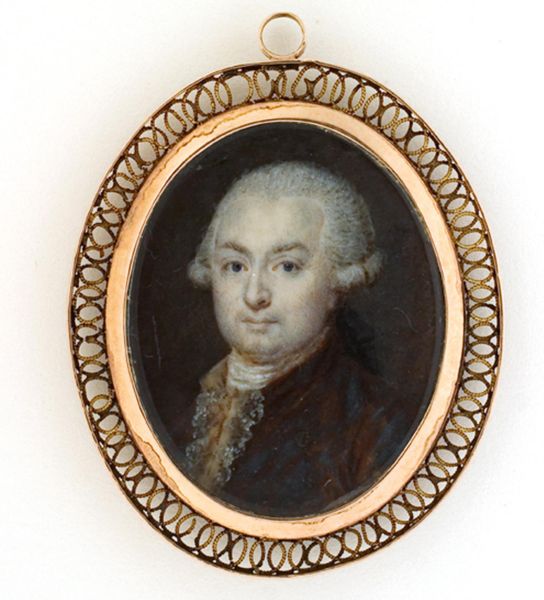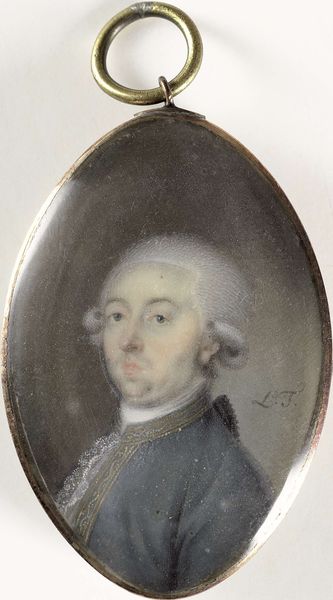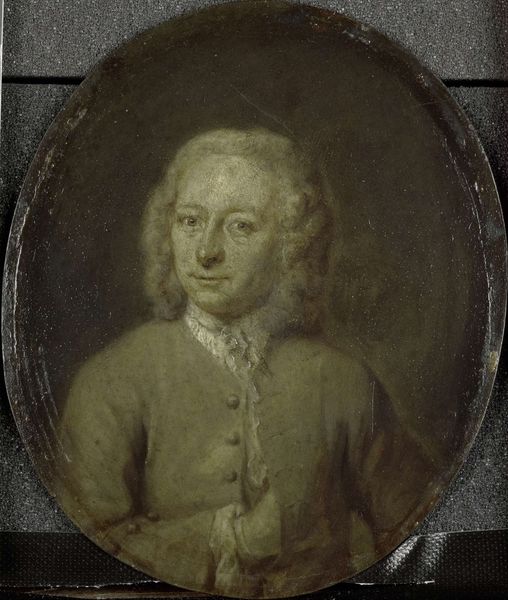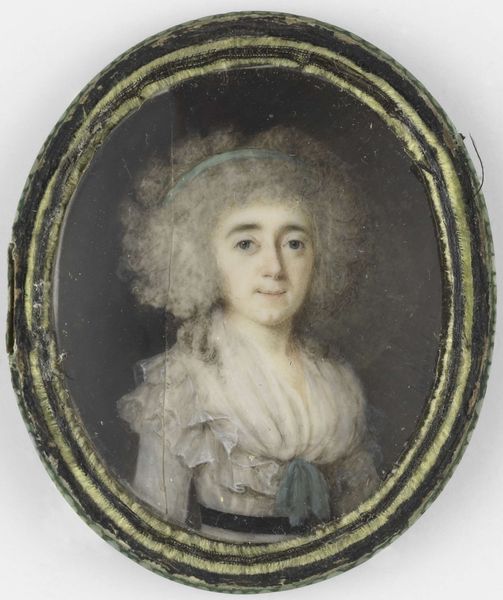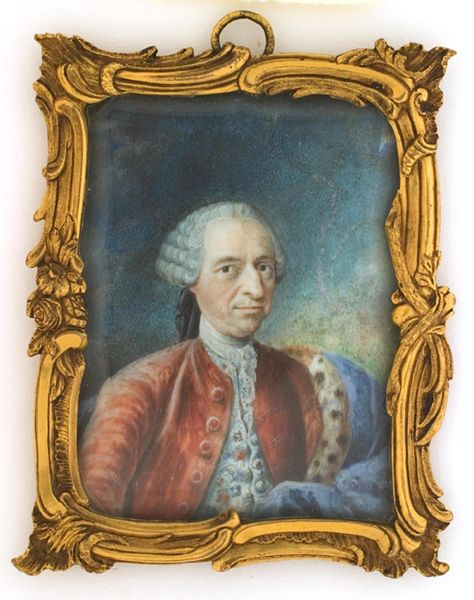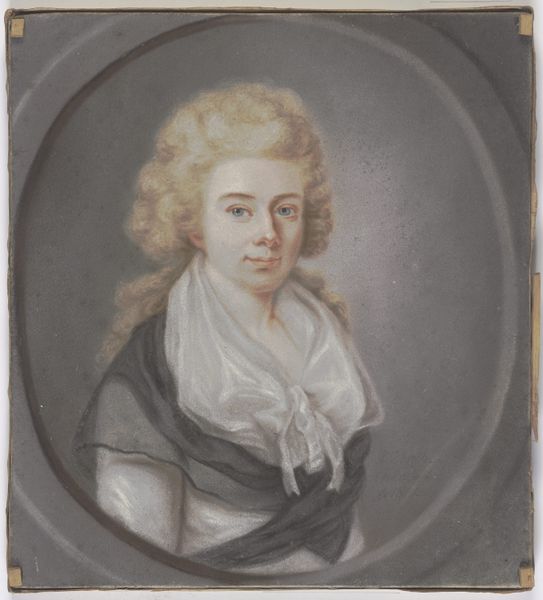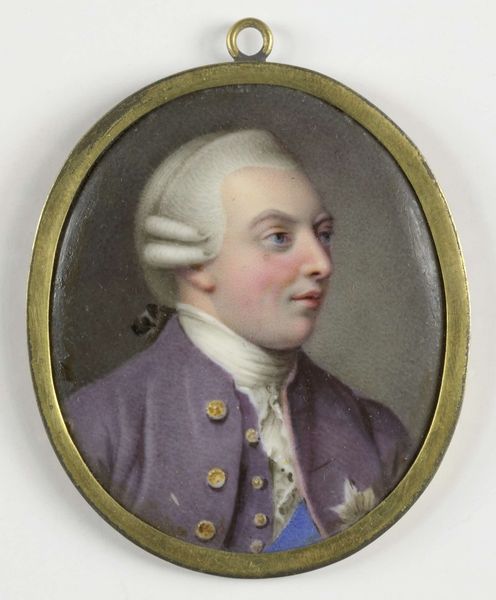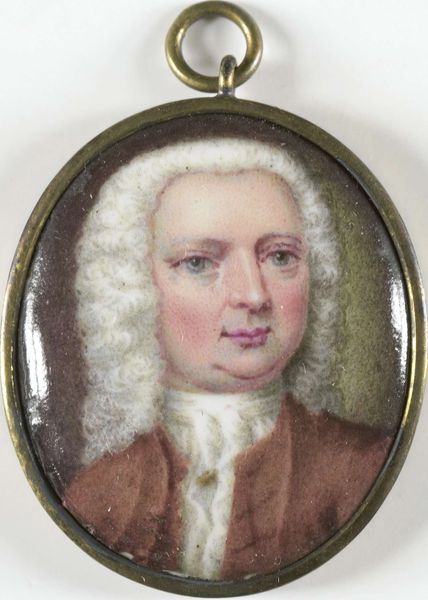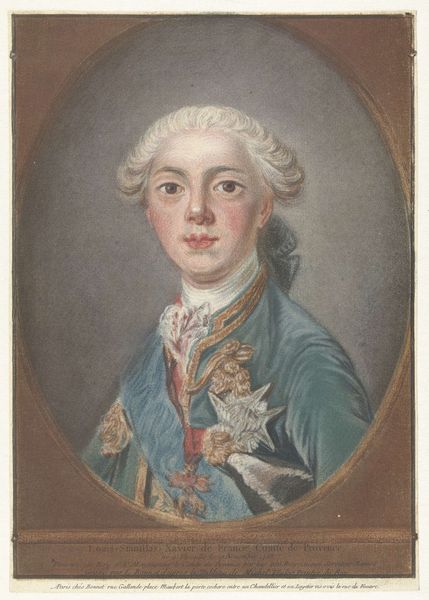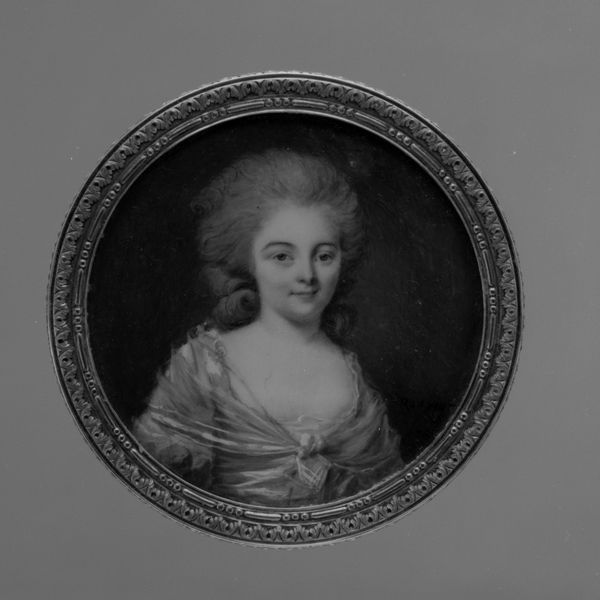
painting, gouache, ivory
#
gouache
#
neoclacissism
#
painting
#
gouache
#
oil painting
#
watercolour illustration
#
ivory
#
miniature
Dimensions: 3.8 cm (height) x 3 cm (width) (Netto)
Curator: Here we have a miniature portrait by C.F. Høyer, dating from 1790 to 1826. It is rendered in gouache on ivory. The title? *Portræt af T. Adeler*. Editor: The first thing that strikes me is the almost ghostly pallor of the sitter. The light, combined with the delicate medium, makes him seem like a fading memory. Curator: Indeed. Høyer masterfully uses the properties of gouache to achieve that ethereal effect. Notice how he builds up the form with very small applications of tone; see how light refracts within this border, giving a tactile almost imperceptible layering that makes light bounce gently. It seems to emit light from within, almost capturing something that seems…real. Editor: The sitter's expression feels carefully neutral, almost passive. It's that late 18th, early 19th century restraint… yet one wonders about the power dynamics at play. Who was T. Adeler and what pressures and constraints might have governed their appearance and presentation at the time? The neat clothing seems intended to be that of somebody that belongs to a higher status of nobility. Curator: We observe the Neoclassical style echoed here – with precise contours that still render softly when compared to academic rigor of the time. Note also the subtle way Høyer employs a color palette that evokes the very particular kind of elegance prized at the time. Editor: Beyond aesthetic pleasure, I find myself pondering how gender and class dictated acceptable forms of representation. Was Adeler allowed to express the full spectrum of their emotions? Curator: A key facet is the material itself. By using a medium such as gouache onto ivory we obtain those beautiful light effects. This allows the skin to come to life and brings an elegant texture of refinement. Editor: Context certainly adds depth to our viewing experience. Thinking about those who commissioned and consumed miniatures – how might they have viewed the relationship between status and appearance? Curator: These kinds of portraiture offered an accessible form for individuals with financial comfort but without nobility status, to showcase some kind of nobility and grace, if you will. Editor: This pushes us beyond formalism. I now perceive something both intimate and calculated. The artist's delicate touches betray an undercurrent of the social framework surrounding portraiture in this period. Curator: Well, I think we have revealed a richness of interpretive angles about this work. Editor: It’s wonderful how a close study, combined with contextual insight, breathes fresh life into historical works.
Comments
No comments
Be the first to comment and join the conversation on the ultimate creative platform.

